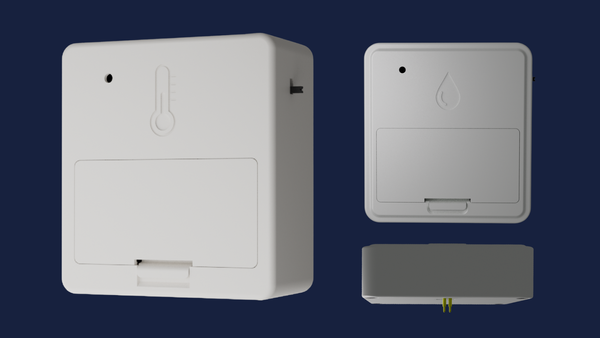3 Surprising Reasons Your Cottage Smells Musty (and How to Fix Them)

If you unlock the door to your cottage, cabin or vacation home and get hit with a stale, “old basement” odour, you’re not alone. A musty smell is one of the most common complaints from vacation-home owners — especially when the place sits closed up for weeks at a time. But why does it happen? The usual suspects (mouldy towels, damp firewood) are easy to spot, but three lesser-known culprits often sneak under the radar and keep that funk lingering in the air. The most likely (and concerning)? Sewer gas. Here's why!
1. Empty Plumbing Traps Letting Sewer Gas Sneak In
Why it happens: Every sink, shower and floor drain contains a curved section of pipe that holds water. That “trap” blocks sewer gas from drifting up through the drain. When your cottage sits vacant for a month or two, the water slowly evaporates — leaving a clear path for sulphur-rich air to seep inside. This is especially likely during the winter in cold and dry climates where many cabins are. What you think is “mould” is most likely methane and hydrogen sulphide wafting through dry traps.
Quick fix:
- Before closing up, pour a cup of RV antifreeze (the pink stuff) or cooking oil into each drain. Both liquids sit on top of the water in the trap and slow evaporation dramatically.
- On spring opening day, run each fixture for 30 seconds to flush the trap and clear any lingering gas.
- Some cabin monitoring devices have air quality sensors built-in that will flag increases in these volatile compounds, tipping you off if a trap dries out mid-season and sewer gases are entering the cabin.
2. Micro-Condensation Inside Cold Air Ducts
Why it happens: Many vacation homes rely on a forced-air furnace set to “away” at, say, 7 °C. Warm, humid outdoor air drifts in during a spring thaw and condenses on the icy inner walls of unused ductwork, then quietly evaporates once the furnace cycles, spreading a damp, dusty smell through the whole house.
Quick fix:
- Close and seal supply registers after your last winter visit so moist air can’t enter the ducts.
- Run your furnace fan for five minutes every few days (some thermostats have an automatic cycle) to keep air moving and prevent cold spots.
- Track indoor humidity remotely; if the reading climbs above 60 % RH for more than a day or two, ask a neighbour to pop in and crack a window or run a dehumidifier.
3. Crawl-Space “Soil Breathing” Raising Humidity Indoors
Why it happens: Many lakeside cabins sit over a low, vented crawl space. Bare earth and damp sand beneath the floor continuously breathe moisture upward. In summer, that water vapour can push interior humidity to 70 % RH, even on days when outdoor air feels comfortably dry - feeding mould spores hidden in carpets, furniture and wall cavities.
Quick fix:
- Lay a heavy poly vapour barrier over bare ground in the crawl space, sealing seams with butyl tape.
- Close exterior vents in late spring once the ground warms up, or install temperature-controlled vents that stay shut on humid days.
- Keep tabs on humidity year-round with a cellular humidity monitor like CabinPulse; if you see prolonged readings above 55% RH, it’s time for a dehumidifier or an inspection of the vapour barrier.
Take-Home Lesson
Mustiness isn’t always about visible mould on walls. Sewer gas, hidden condensation and crawl-space moisture all pump odours - and spores - into the air without obvious warning signs. A few low-cost housekeeping tweaks combined with continuous VOC and humidity monitoring (no Wi-Fi required) will keep that first step into your getaway smelling like fresh pine instead of a forgotten gym bag.




